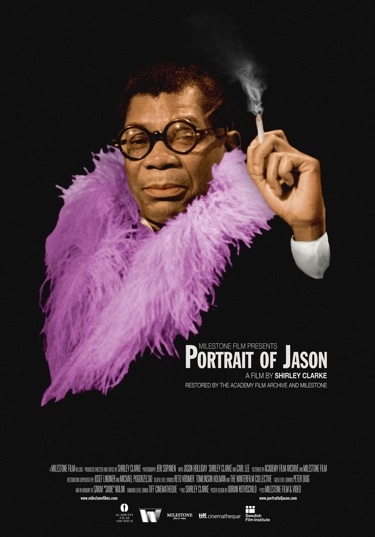 When Portrait of Jason opened in 1967, there were no LGBT film festivals. Major newspapers and respectable citizens referred to gays and lesbians in appallingly derogatory language. Civil rights pioneer Bayard Rustin had been shunted to the sidelines by Adam Clayton Powell, for fear that this homosexuality would undermine the movement. To be black and gay meant a life on the margin of the margins.
When Portrait of Jason opened in 1967, there were no LGBT film festivals. Major newspapers and respectable citizens referred to gays and lesbians in appallingly derogatory language. Civil rights pioneer Bayard Rustin had been shunted to the sidelines by Adam Clayton Powell, for fear that this homosexuality would undermine the movement. To be black and gay meant a life on the margin of the margins.
And here was Jason Holliday talking for nearly two hours about his brave, bawdy life before the camera.
There was some precedent for Portrait of Jason in Andy Warhol’s flurry of talkies, particularly the Ron Tavel-scripted Fire Island gabfest My Hustler. Warhol also made film portraits of uncomfortable intensity—Edie Sedgwick going about her daily business in The Poor Little Rich Girl, for example.
The debt to Warhol is economic and logistical, not just aesthetic. The unprecedented mainstream interest in Warhol’s The Chelsea Girls strained the passive distribution capacity of the Film-Makers’ Cooperative, which booked mostly college showings and underground establishments. To break into first-run theaters coast-to-coast, Jonas Mekas, Shirley Clarke, and Louis Brigante created the more commercially-minded Film-Makers Distribution Center. Portrait of Jason would be handled by the new FMDC, a potential cross-over hit in an era when Hollywood had largely missed recent upheavals in American taste. Holliday even cut a comedy LP.
